Advancing on Pokrovsk proved too difficult (remember that was about to fall in the first half of August), so the Russians turned to Vuhledar. Before the war, it was a small town of 15,000 people with no war industry. Unlike Pokrovsk, it was not a rail center and strategic roads did not run through it to anywhere. The Russians advanced a few miles with no follow up breakthrough and exploitation. (And) Russian advances have slowed over the last 3 weeks. Its the same story we have seen all summer. Putin seems determined to take whatever territory he can before the US election, in the hope that Trump wins, the war is frozen and he gets to keep it. Vuhledar changes little in that equation.
This week Ukrainian forces pulled out of their last part of the small town of Vuhledar. It was, once again, portrayed as a strategic victory for Russia.
A few things on Vuhledar. It was, before the war, a small town of about 15,000 people. Of course almost all those people had left a while ago, and there was no war industry in the town. Moreover, unlike Pokrovsk for instance, it was not a rail center and strategic roads did not run through it to anywhere.
Vuhledar’s sole importance in the war was as point in a defensive line. That it did well for two years. Recently, however, the Russians started their micro advances around it. By early September they had started surrounding the town. Here was the map on September 8.
And here it was exactly 3 weeks later.
The Russians had pushed forward at an incredibly slow rate—at just over a kilometer a week. However they put Ukrainian forces in too risky a position to hold the defensive fortification in the ruins of the town. This week Ukrainian forces left.
What has Russia gained? They have captured a Ukrainian defensive position—and at great cost. They have advanced a few miles. There is also no follow up breakthrough and exploitation. Its the same story we have seen all summer.
And actually, though stories are again circulating of Ukraine on the verge of collapse—Russian advances have actually slowed over the last 3 weeks. Here is the map of the area of most intense fighting (which stretches from Chasiv Yar in the North to Vuhledar) 6 weeks ago (August 24).
Here it is 3 weeks ago (September 14)
Here is the map today.
The advances over the last 3 weeks have been very small indeed. I put in a ruler at what is arguably the largest area of Russian advance—and its 5 kilometres long (just about 3 miles).
This is what is strange. For all the discussion, the story of the summer and now fall was monotonously the same throughout the Donbas—as I wrote about in June.
Slow, incremental and bloody micro-advances by the Russian army. Putin still seems determined to take whatever territory he can before the US election, probably in the hope that Trump wins and that the war is frozen at that point and he gets to keep it (though the Ukrainian offensive in Kursk has complicated things in this analysis). However the specific case of Vuhledar changes little in that equation. It seems that advancing on Pokrovsk proved too difficult (remember that was about to fall in the first half of August, so the Russians turned to an area that was closer.



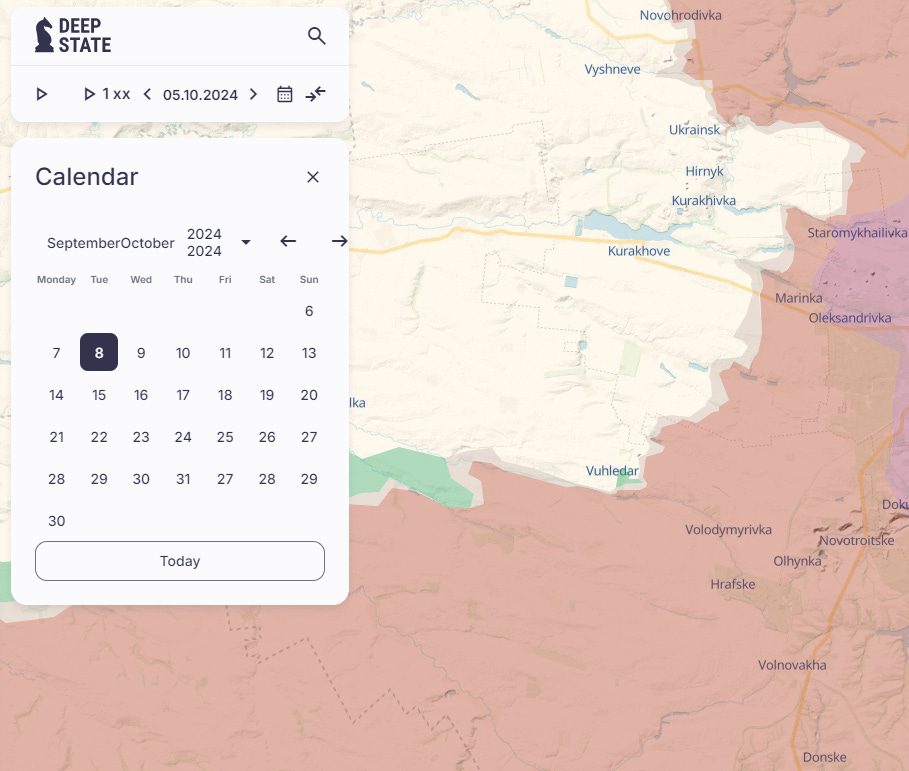
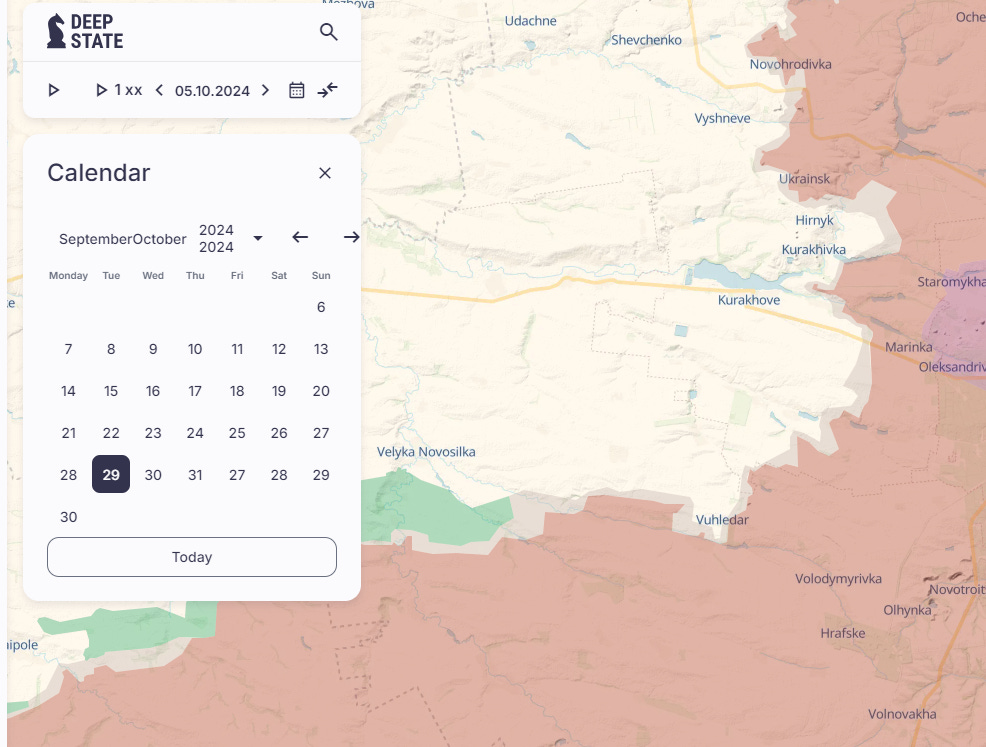
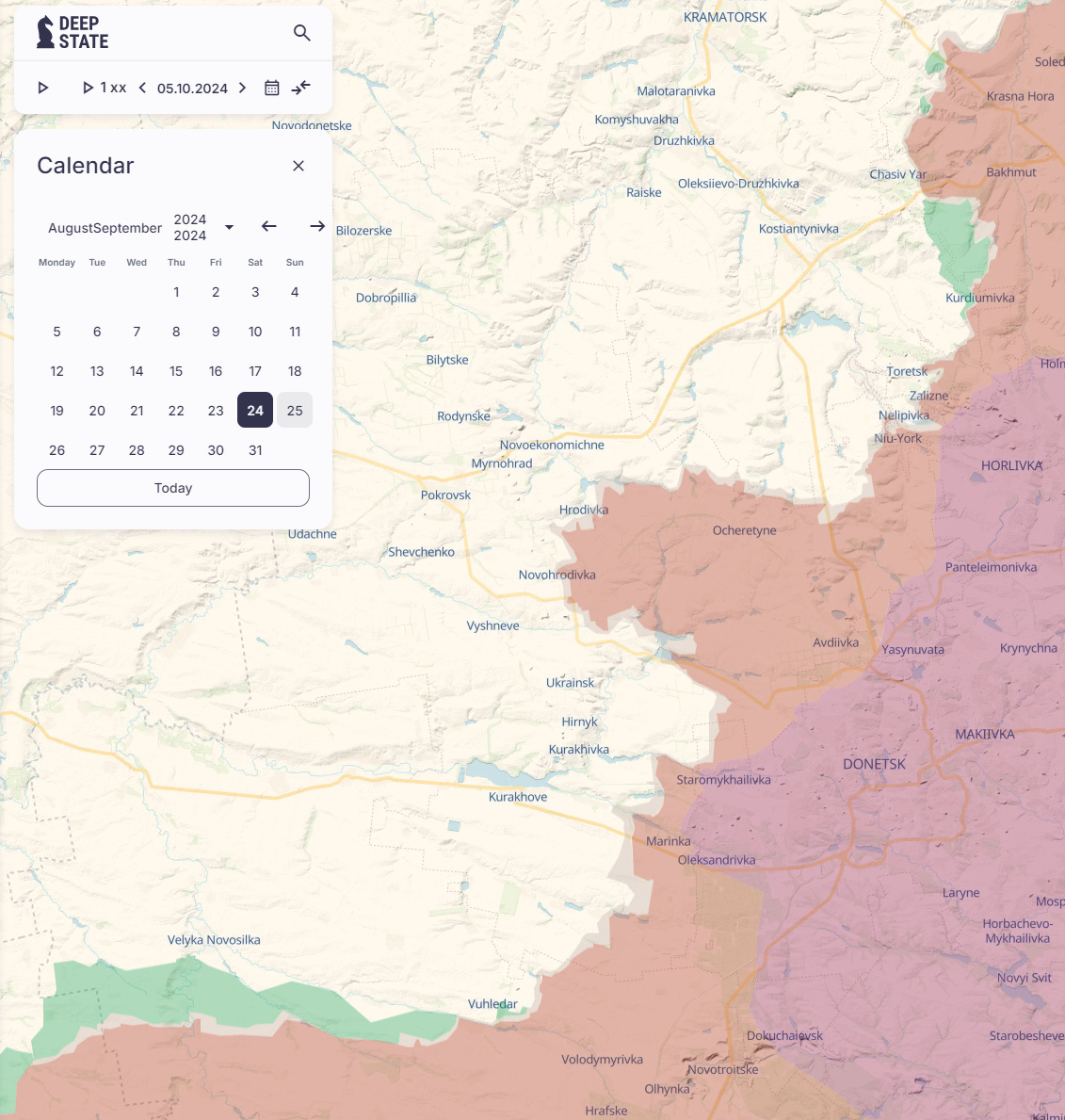
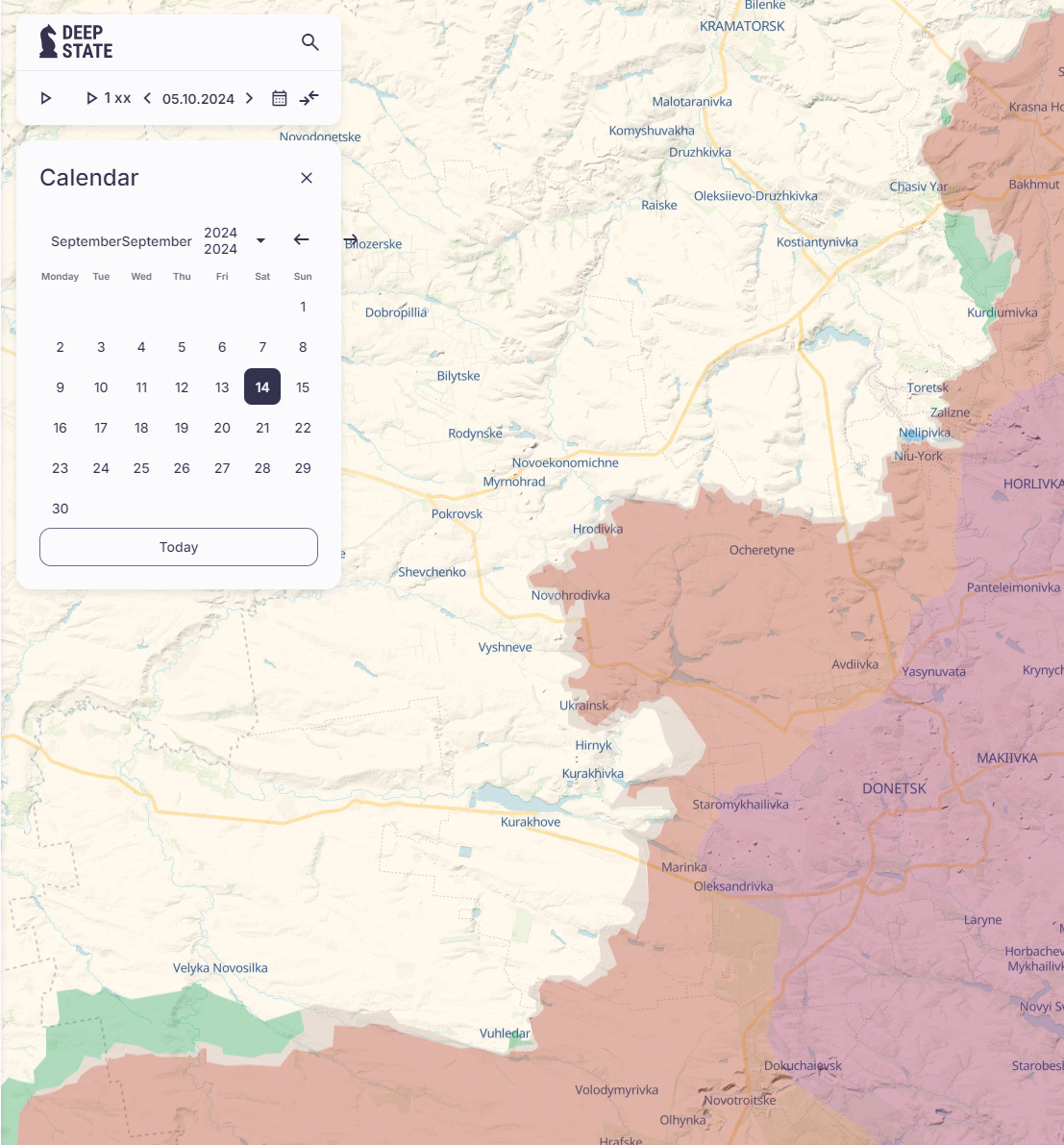
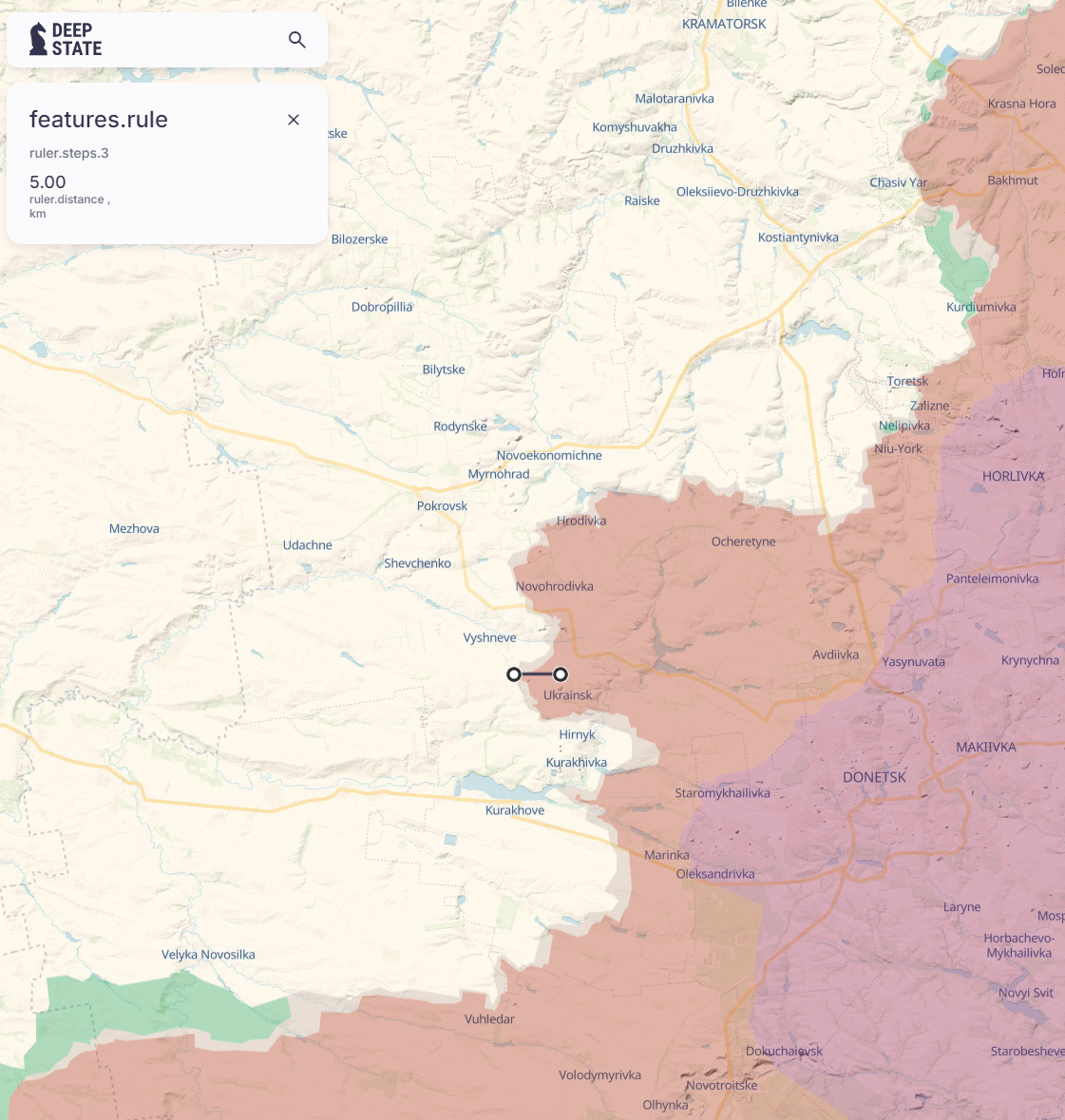


















0 comments:
Post a Comment